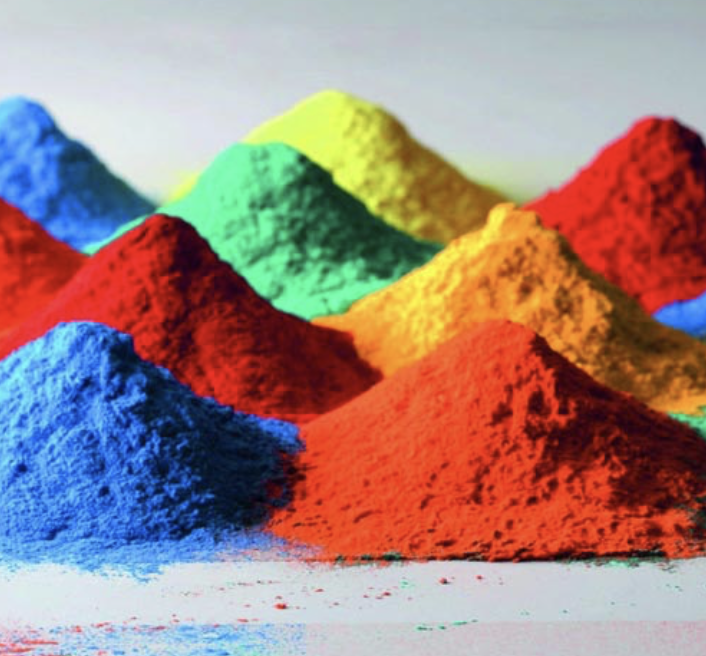
Unleashing Color Brilliance: Blending Pigment for High Performance Coatings
Discover how blending pigments can benefit of high performance coatings over paint-store tinting, ensuring long-lasting color and gloss retention.
- High Performance Coatings
Discover how blending pigments can transform the quality and durability of high performance coatings, ensuring vivid, long-lasting color and superior gloss retention.
Exploring the Basics of Pigment Blending
Pigment blending is a critical process in the creation of high performance coatings. The process involves the thorough mixing of pigments to achieve a consistent color and texture before being incorporated into a binder. Understanding the characteristics of different pigments, including their particle size, shape, and inherent color properties, is essential for successful blending. This foundation ensures that the final coating exhibits uniform color when applied to a surface.
Additionally, the blending process must be meticulously controlled to prevent issues such as clumping or uneven distribution. By mastering the basics of dry pigment blending, manufacturers can enhance the quality of their coatings, leading to superior final products that stand out in the market.
Advantages of Blending Pigment in Coating Applications
The use of dry pigments in coating applications comes with several advantages. Firstly, they offer excellent color strength and saturation, allowing for the creation of vibrant and intense hues. They also provide a high level of control over the final color, as adjustments can be made during the blending process without altering the coating's other properties.
Moreover, blended pigments contribute to the longevity of coatings. They are less prone to fading and degradation over time compared to "paint store" liquid tints, leading to long-term color retention and gloss protection. This durability is particularly important for coatings exposed to harsh environmental conditions, such as UV radiation and extreme temperatures. When compared to many "paint store" manufacturers using standard store tinting practices, high performance coating companies like Tnemec, are more apt to use blending to ensure more durable finishes that will withstand color fade and chalking adding value to the owners, especially with dark, deep and bright or vibrant colors.
Techniques for Optimal Pigment Dispersion
Achieving optimal pigment dispersion is vital for the quality of the final coating. Several techniques can be employed to ensure even distribution of pigment particles throughout the binder. The use of high-speed mixers and mills is common, as they can break up agglomerates and fully disperse the pigment. Additionally, additives known as dispersants can be used to improve flow properties and prevent pigment re-agglomeration.
The choice of technique often depends on the specific pigment and quality of binder being used, as well as the desired properties of the final product. Careful consideration and testing are necessary to determine the most effective method for each unique coating formulation.
Impact of Pigment Blending on Color Consistency and Depth
Pigment blending plays a pivotal role in achieving color consistency and depth in coatings. Consistent blending ensures that each batch of coating material will match the previous ones, which is crucial for applications requiring uniform appearance across large surface areas or multiple production runs. Depth of color is also influenced by the pigment blend, with well-dispersed pigments providing a richer and more complex visual effect.
Factory blending, using a skillful combination of pigments can create shades that are more nuanced and have greater visual appeal, than "paint store tinting". Additionally, the interplay between pigment size and light reflection can be manipulated through the blending process to enhance the gloss and sheen of the final coating, contributing to an overall perception of higher quality.
Trends in Pigment Technology for Coatings
For high performance coating manufacturers, likeTnemec Company, sustainability will continue to be a driving force in pigment technology development. Eco-friendly pigments that are non-toxic and derived from renewable sources are likely to become more prevalent. As the industry evolves, the methods of blending and applying pigments will also advance, potentially leading to more efficient manufacturing processes and enhanced performance of coatings. For more information on the advantages of blending over store tinting, reach out to a High Performance Coating consultant for more information..
Check out our other resources on this topic:
The Science Behind High Performance Coatings
Are High Performance Coatings Environmentally Friendly?
Different Epoxy Chemistries and Where to Use Them
Don't miss these project profiles:
Eiffel Tower At Paris Las Vegas

Do High Performance Coatings Provide Graffiti...
High-performance coatings can offer anti-graffiti...

How Do High Performance Coatings Differ From...
High-performance coatings differ from regular...

What Considerations Should an Architect Make...
Before specifying a high-performance coating,...